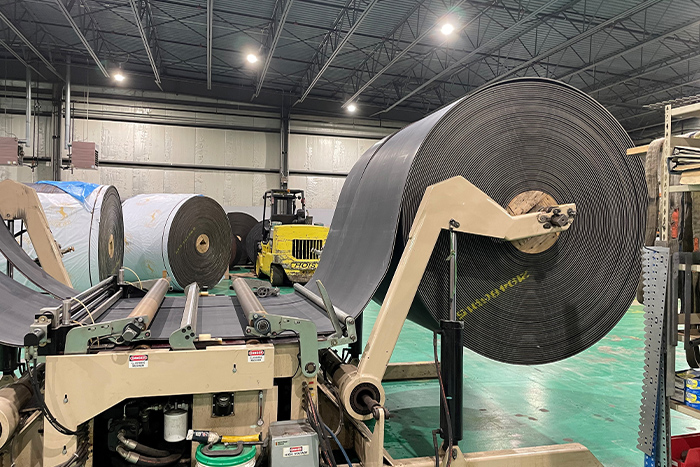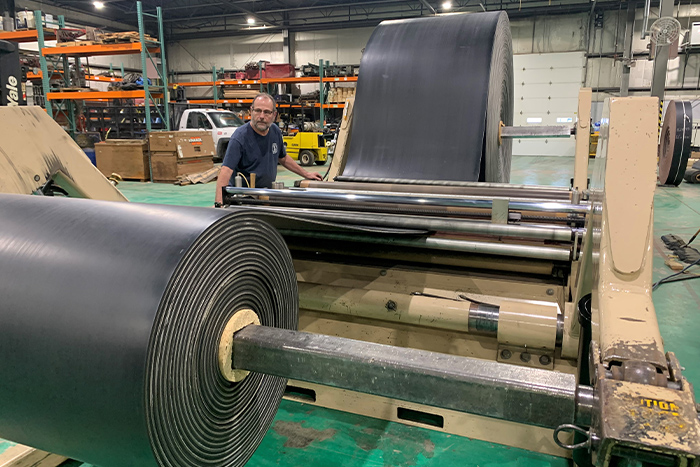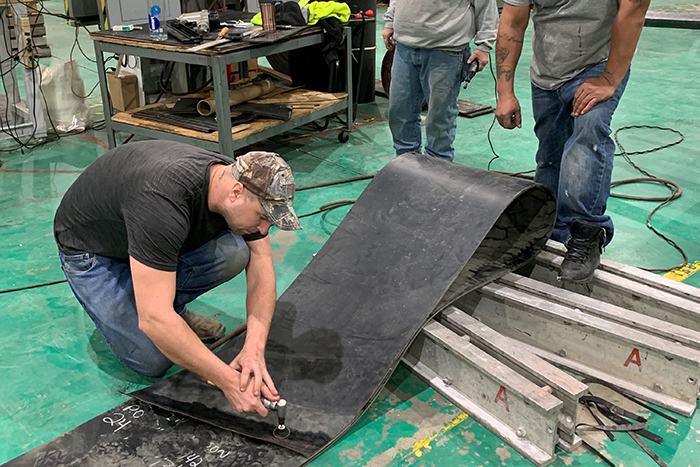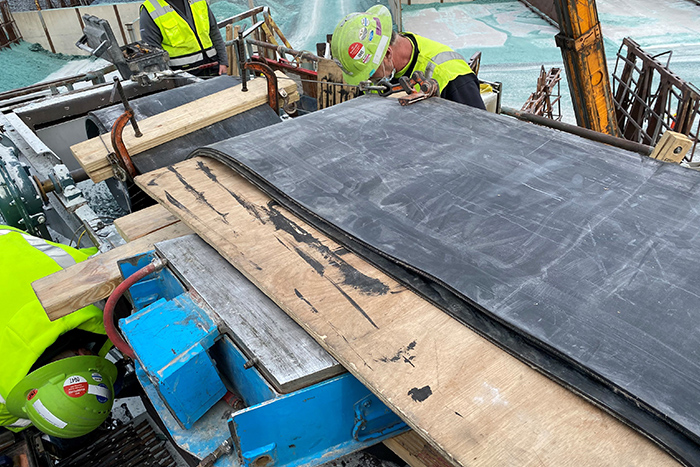
People often ask how we remove slabs of conveyor belt from the massive rolls in our warehouses, and then transport them and install them onto our customers’ systems. If it’s late at night and we’re sleeping, we won’t answer those questions. But if we’re coherent, we’ll oblige with a detailed response.
“Most of the belt we receive is delivered in rolls that are 72″ wide by at least 1,000’ long and weigh thousands of pounds,” said Binkelman Marketing Manager Rebecca Conrad. “Once it arrives, we assign a unique number to each roll.” Sometimes we’ll give a roll a nickname, too, especially if it has an unusual aura or a personality flaw.
“By the time many customers are ready for a new belt, they’ve made changes to their conveying system,” Conrad said, while simultaneously doodling a suggestive cartoon of herself and a roll of Continental ContiTitan 660/2 lying on a blanket in the woods. “Our Account Managers are happy to work with customers to gather information about their system and any recent adjustments, and then recommend the correct belt specification. We enter that info into a belt specification program that calculates the suggested belt specs.”
A Binkelman conveyor specialist will select the belt that works best for the customer’s system, enter all sorts of fun info into our computer system, and schedule the roll to be cut. Rickey Cousino – our lead belt slitter – has 15 years on the job.
He uses a forklift to load the belt into the slitter, set the desired width and length and then carefully feeds the belt through the slitter. Rickie takes pride in his role, making sure that no blemishes or manufacturer’s defects slip by. “Rickie has seen thousands of feet of belt over the years,” said Conrad, “so he knows what he’s looking for.” In fact, he’s starting to look a little like conveyor belt, which probably is not good.
After the belt is approved, it’s unloaded from the slitter and prepped for delivery to the customer. In some cases, we’ll install mechanical fasteners to each end of the belt to ensure a quicker installation once it’s on the customer’s system. Other times, the Binkelman Conveyor Maintenance team will install the belt onto the system using a vulcanized splice. Either way, our customers are always throwing a “new belt party” – complete with confetti – shortly after calling Binkelman.
With a dedicated team and more than $2 million of belt inventory onsite, we can have your conveyor operation up and running within 24 or 48 hours. Contact the Binkelman team today for more information.



